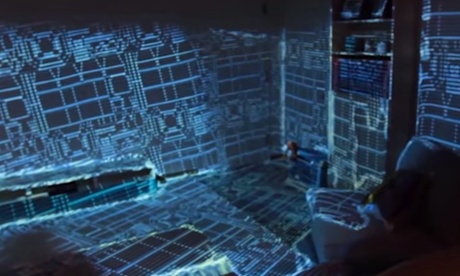
The Holodeck from Star Trek has seemed like a pipe dream for decades, but Microsoft’s latest research RoomAlive project has come tantalisingly close.
The system uses a series of projectors and Microsoft Kinect camera sensors to map out a living room and the people in it, projecting an augmented reality onto every surface, tables, walls, seats and cushions included.
“RoomAlive enables any space to be transformed into an augmented, interactive display,” said Hrvoje Benko, who was part of the 10-person RoomAlive research project at Microsoft in a blog post.
The system uses projection mapping – where displays are projected on to real-world objects to simulate environments or augment reality – to create a game space the size of a whole room. The Kinect cameras track the player’s movements allowing them to directly interact with the virtual objects, creatures and environment.
Objects appear to be 3D to the player as the cameras track the player’s head and project the objects with the correct perspective, using a similar technique to Amazon’s Fire Phone and its “Dynamic Perspective” system.
‘Users can touch, shoot, stomp, dodge, and steer’
“Our system enables new interactive projection mapping experiences that dynamically adapts content to any room,” Benko explained. “Users can touch, shoot, stomp, dodge, and steer projected content that seamlessly coexists with their existing physical environment.”
The new RoomAlive system is based on a previous project from Microsoft Research called Illumiroom, which used projector to expand gaming content from a TV into the surrounding room. RoomAlive goes one stage further allowing full interaction with the elements projected into the room.
Projection mapping is not a new technique; theme parks and immersive theatres have been using the technology for a while, but they were only made possible by bespoke room, furniture and projector design.
“Now, with enough computing power, depth cameras, and projectors, it’s possible to create these immersive environments within an ordinary living space,” said Benko. “Augmented reality fundamentally changes the nature of communication, with rich interactions not just for entertainment, but also for work and collaboration.”
RoomAlive is still a proof-of-concept and will not be available as a consumer project any time soon, but demonstration video is certainly impressive, featuring several games, environments and interactions, allowing players to control elements with their bodies, a gun and a joypad.
It’s not quite holographic, but RoomAlive at least has the same idea as the iconic Holodeck.
• Alien: Isolation review – Giger’s creature gets the game it deserves

